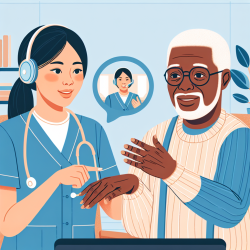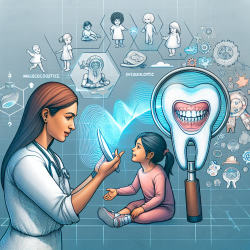Introduction
In recent years, the importance of patient satisfaction in healthcare has become increasingly evident. A recent study titled Telepractice Treatment for Aphasia: Association Between Clinical Outcomes and Client Satisfaction by Jacobs et al. (2021) highlights the correlation between clinical outcomes and client satisfaction in telepractice treatments for aphasia. This blog will explore how practitioners can leverage these findings to enhance their skills and improve patient outcomes.
Understanding the Study
The study involved 22 adults with post-stroke aphasia residing in rural areas. They received comprehensive language-oriented treatment (LOT) for aphasia through a community-based telepractice approach. The study aimed to assess the satisfaction with this approach and its correlation with patient outcomes.
After 12 sessions, the Western Aphasia Battery-revised (WAB-R) aphasia quotients (AQs) improved on average by 4.64 units. Additionally, the Client Satisfaction Questionnaire-8 (CSQ-8) scores averaged 31.0 out of 32, indicating a high level of satisfaction. Each 1-unit improvement in patient satisfaction was associated with a 1.75-unit increase in the WAB-R AQ.
Key Takeaways for Practitioners
- Emphasize Patient Satisfaction: The study underscores the importance of patient satisfaction in determining treatment efficacy. Practitioners should focus on creating a positive treatment experience to enhance clinical outcomes.
- Utilize Telepractice: Telepractice offers a viable alternative to traditional face-to-face treatments, especially for patients in rural areas. It increases accessibility and can lead to high levels of patient satisfaction and clinical improvement.
- Incorporate Technology: Despite some patients' limited technological experience, the study found that the incorporation of technology did not hinder satisfaction. Practitioners should embrace technology to facilitate effective treatment delivery.
Encouraging Further Research
While the study provides valuable insights, it also highlights the need for further research. Future studies should explore the satisfaction of telepractice compared to in-person treatment and examine the impact of different telepractice approaches on clinical outcomes.
Conclusion
The study by Jacobs et al. (2021) demonstrates the potential of telepractice in treating aphasia and highlights the critical role of patient satisfaction in achieving positive clinical outcomes. By implementing these findings, practitioners can enhance their skills and improve the quality of care for their patients.
To read the original research paper, please follow this link: Telepractice Treatment for Aphasia: Association Between Clinical Outcomes and Client Satisfaction.










